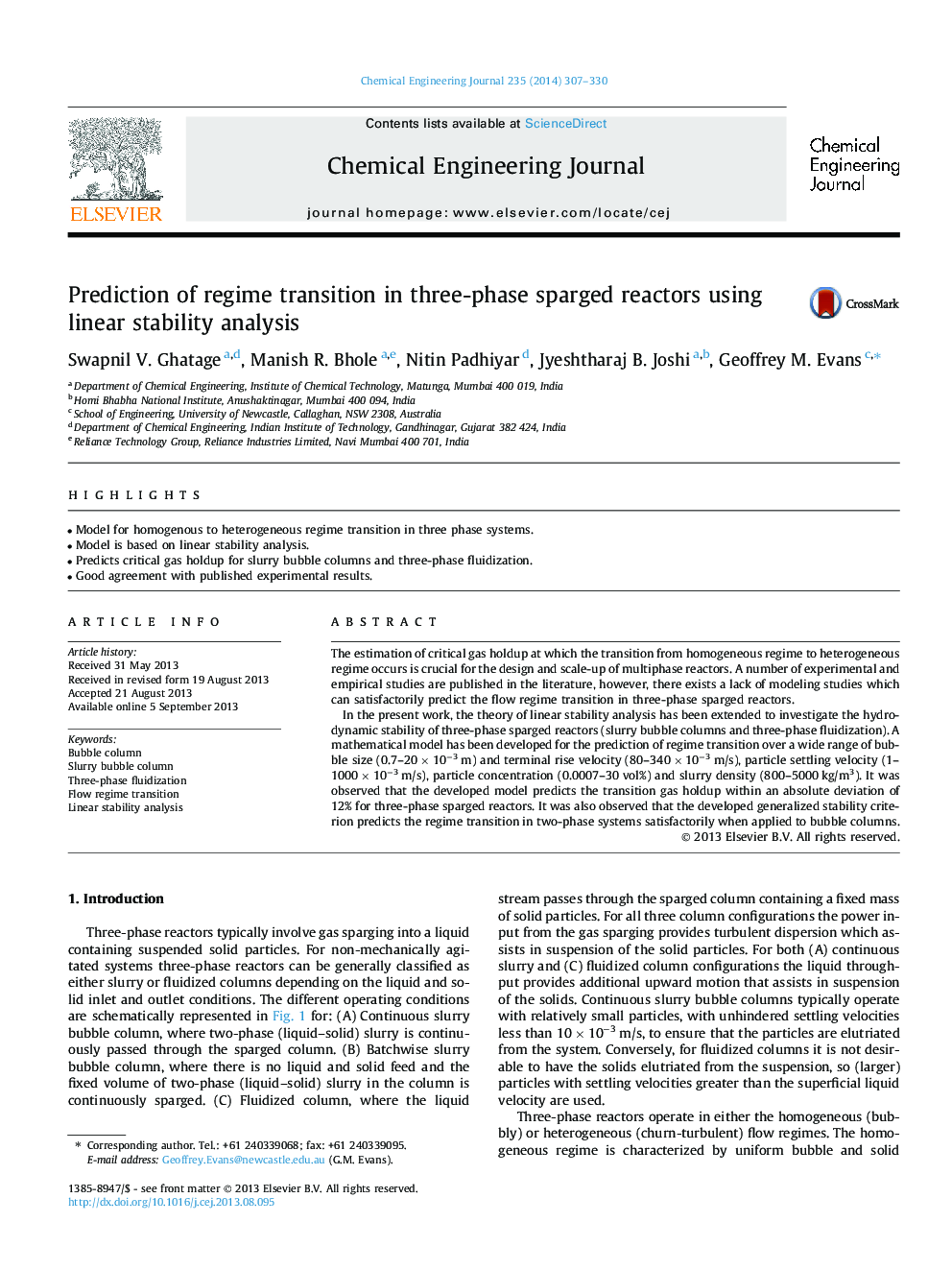| Article ID | Journal | Published Year | Pages | File Type |
|---|---|---|---|---|
| 148346 | Chemical Engineering Journal | 2014 | 24 Pages |
•Model for homogenous to heterogeneous regime transition in three phase systems.•Model is based on linear stability analysis.•Predicts critical gas holdup for slurry bubble columns and three-phase fluidization.•Good agreement with published experimental results.
The estimation of critical gas holdup at which the transition from homogeneous regime to heterogeneous regime occurs is crucial for the design and scale-up of multiphase reactors. A number of experimental and empirical studies are published in the literature, however, there exists a lack of modeling studies which can satisfactorily predict the flow regime transition in three-phase sparged reactors.In the present work, the theory of linear stability analysis has been extended to investigate the hydrodynamic stability of three-phase sparged reactors (slurry bubble columns and three-phase fluidization). A mathematical model has been developed for the prediction of regime transition over a wide range of bubble size (0.7–20 × 10−3 m) and terminal rise velocity (80–340 × 10−3 m/s), particle settling velocity (1–1000 × 10−3 m/s), particle concentration (0.0007–30 vol%) and slurry density (800–5000 kg/m3). It was observed that the developed model predicts the transition gas holdup within an absolute deviation of 12% for three-phase sparged reactors. It was also observed that the developed generalized stability criterion predicts the regime transition in two-phase systems satisfactorily when applied to bubble columns.
